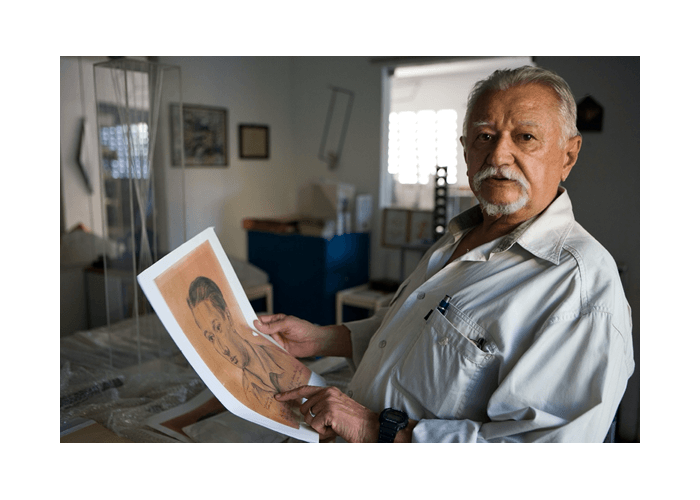
Sérvulo Esmeraldo
Sculptor, engraver, draftsman, and kinetic artist Sérvulo Esmeraldo began his artistic career in the late 1940s in northern Brazil, where he attended the open studio of the Sociedade Cearense de Artes Plásticas in Fortaleza. In 1951, he moved to São Paulo to study architecture, his arrival coinciding fortuitously with the first Bienal de São Paulo. Interested in mathematics, geometry, and physics, Esmeraldo also studied mechanics, electricity, and optics.
In the 1950s, Esmeraldo moved to France, where he worked and lived in close contact with an expatriate Brazilian community of artists, including Vicente do Rego Monteiro, Lygia Clark, Sérgio de Camargo, Franz Krajcberg, Arthur Luiz Piza, Flávio-Shiró, and Rossini Peres. He took classes in printmaking at the École Nationale Supérieure des Beaux-Arts, and learned metal engraving in the studio of Johnny Friedlaender. During his first years in France, he also made weekly visits to the National Library, where he studied prints by Albrecht Dürer. In 1959, he was invited to participate in the fifth Bienal de São Paulo, marking the growing recognition of his work. He simultaneously pursued commercial work designing book covers, magazine illustrations, and record album covers.
In the early 1960s, Esmeraldo began making paintings and art objects he called Excitables, works which were activated by the static electricity from the viewer’s touch. Upon his return to Brazil in 1977, Esmeraldo started making public art projects. He organized two international exhibitions of ephemeral sculptures in 1986 and 1991, in which he invited artists from around the world to send designs for sculptures, to be completed and installed by preparators in his hometown of Ceará, Brazil. The exhibitions were unprecedented events in the history of public art production. Throughout Esmeraldo’s work—whether in printmaking, sculpture, or kinetic projects—a close observation of nature underpins his constructions. He returns consistently to the idea of line as an abstract value, and he observes, “Geometry describes everything that you see.”





